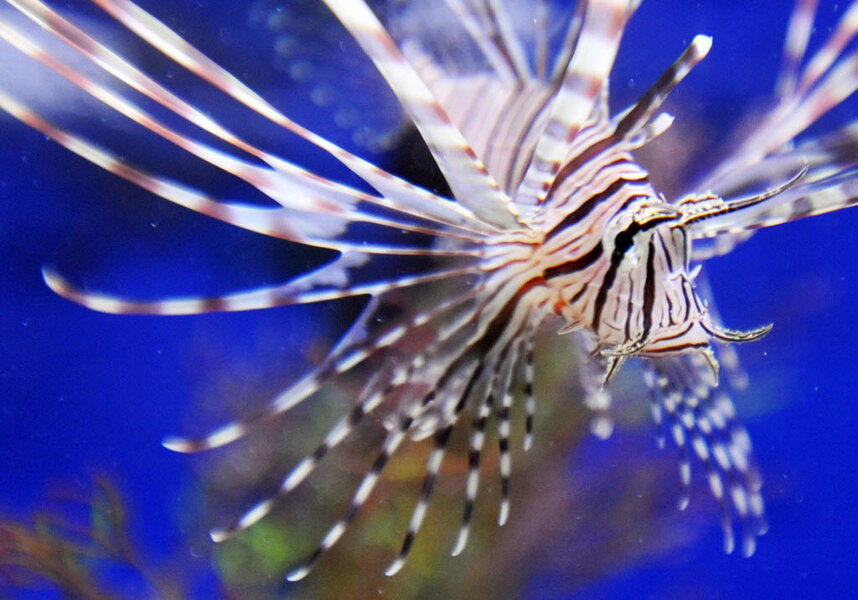Predatory lionfish now a confirmed invader in the deep Atlantic
Loading...
An expedition down to the Atlantic depths has confirmed for the first time that the lionfish, an invasive species, is living there. The expedition verifies anecdotal evidence that the venomous animal is eluding eradication and imperiling native fish.
Last month, the first expedition to send a deep-diving submersible down to investigate the Atlantic Ocean lionfish invasion found at 300 feet deep large populations of the fish. Scientists believe that native fish are becoming lionfish prey, as the lionfish hunts any fish smaller than it, and are also losing out against the foreign fish in the competition for food.
“This data has confirmed for us that we have a problem there,” said Stephanie Green, lead scientist on the project and a postdoctoral associate at Oregon State University’s Hixon Lab, noting that researchers are still investigating the exact scale of the issue. “This is the first time we’ve had a look at what the problem is in deep depths – it’s the next frontier in this study.”
Scientists have traced the lionfish, native to the Indo-Pacific and the first exotic fish to invade the Caribbean, to the aquarium trade between oceans in the 1980s. The fish were likely released into the ocean near southern Florida.
“Genetic work has showed that the whole invasion began from a few releases,” said Dr. Green.
Divers have been relatively successful at removing lionfish from Florida’s shallow coral reefs, and there have been various efforts in the region to drive up dinner-table demand for the fish. The Reef Environmental Education Foundation Fund sells a cookbook devoted to lionfish recipes, as well as a list of local restaurants that serve lionfish. Conferences on the invasive species have ended with tastings of lionfish cuisine.
But deep-sea dives to the depths that the lionfish has now claimed are not possible, and humans have not been able to remove them. That raises concern that the fish might use the deep sea as a base from which to retake the shallower water.
“There’s some concern that the lionfish might be using a deep-sea refuge,” said Green, noting that further study is needed to confirm that hypothesis.
The effect of the lionfish, a venomous fish that plumes like a Japanese fan, is well known in the shallower Atlantic, but its impact on the deep sea is less well understood. The animal is what is known as a gape-limited predator, which means that the fish is limited in food consumption by the size of its mouths. The fish, growing up to 47 cm in length, can consume prey up to half its size, which puts about 70 percent of the fish population within their gulp. Studies have shown that at least 40 species of fish have dropped in number since the lionfish was introduced to their Atlantic environment, Green said.
“There is strong evidence that the lionfish is having negative effects on the native population,” she said. “We don’t see any signal that anything is controlling lionfish population.”
As big fish tend to live longer, the lionfish also reproduce more efficiently than do smaller fish: One female lionfish can spawn some 2 million eggs per year; the eggs are bundled in gelatinous blobs of some 12,000 to 15,000 eggs and distributed throughout the ocean. That means that the invasive lionfish population has grown in a disproportionate number relative to native fish deep in the Atlantic.
And a separate study released this week from the University of North Carolina at Chapel Hill also suggested that a lack of native predators in the Atlantic has further boosted the lionfish’s disproportionate growth: Nothing is down there to eat them.
Researchers are now investigating possible solutions to the lionfish problem, including creating deep-sea traps that could nab the large fish, said Green. Scientists are also hoping to catch one of the fish – using mounted suction cups – in the deep environment to better understand the changing ecosystem there.








